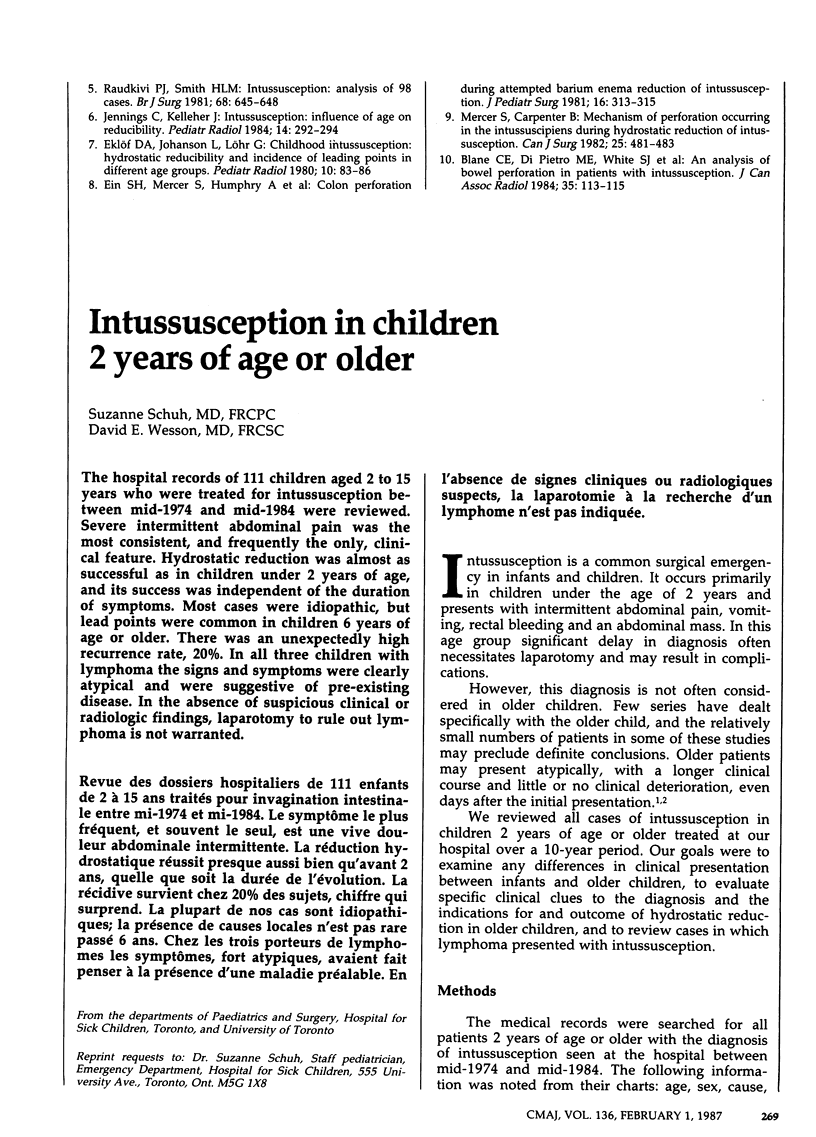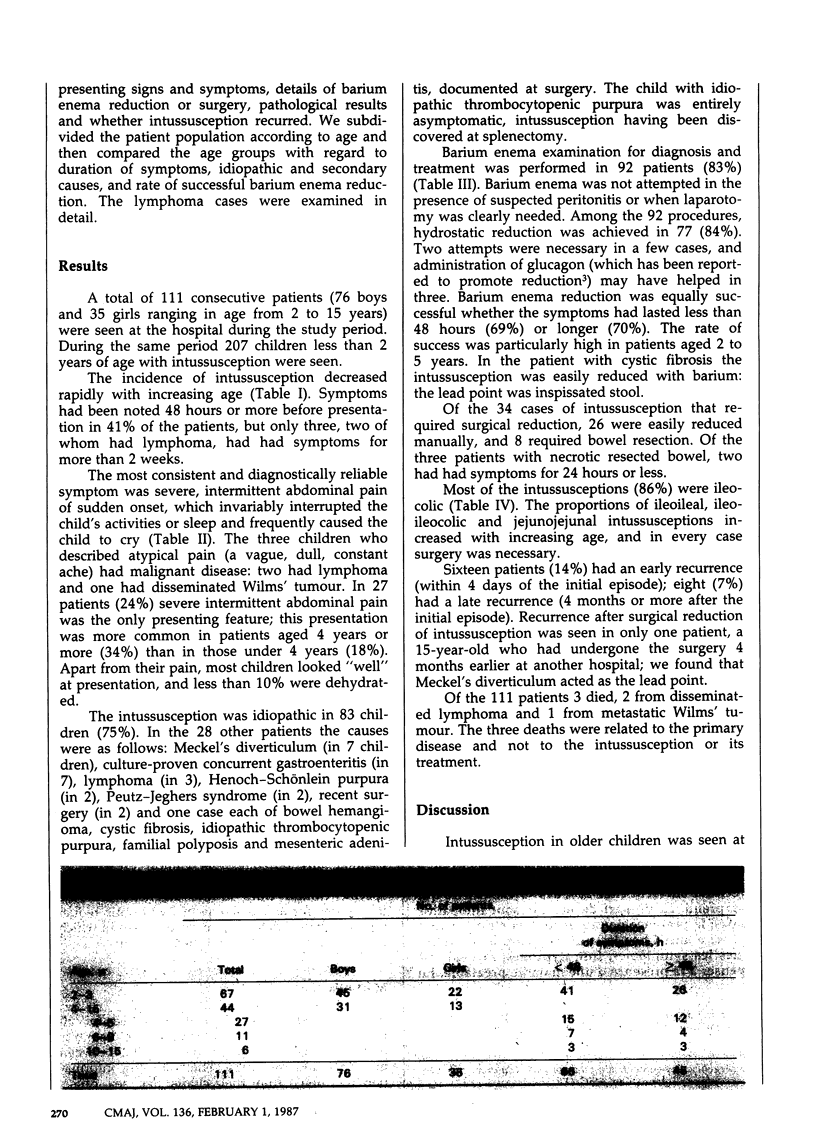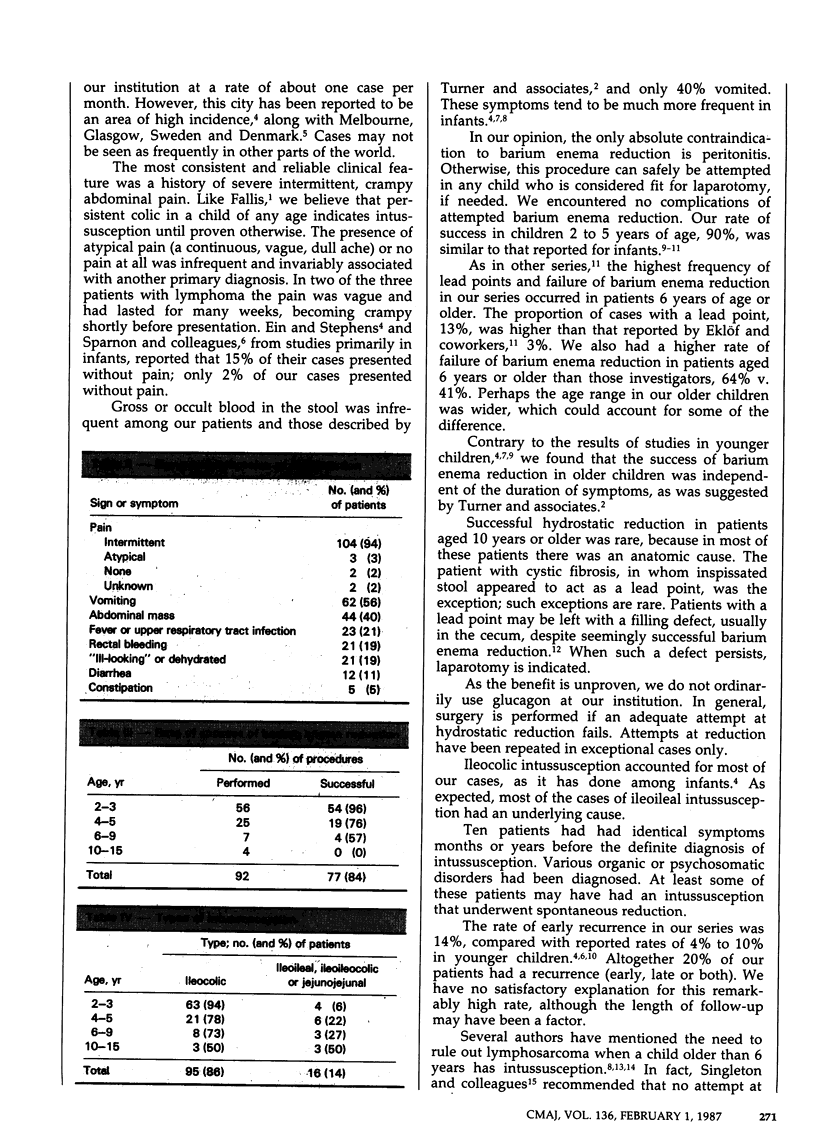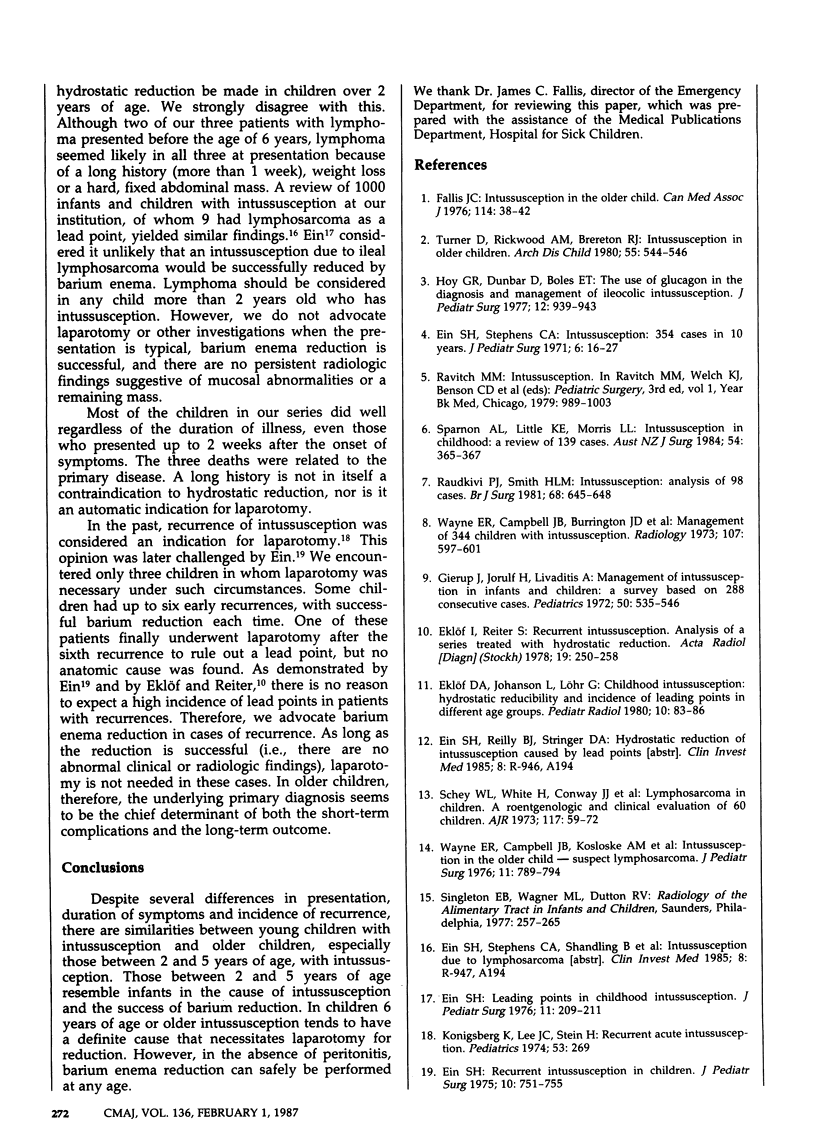Abstract
The hospital records of 111 children aged 2 to 15 years who were treated for intussusception between mid-1974 and mid-1984 were reviewed. Severe intermittent abdominal pain was the most consistent, and frequently the only, clinical feature. Hydrostatic reduction was almost as successful as in children under 2 years of age, and its success was independent of the duration of symptoms. Most cases were idiopathic, but lead points were common in children 6 years of age or older. There was an unexpectedly high recurrence rate, 20%. In all three children with lymphoma the signs and symptoms were clearly atypical and were suggestive of pre-existing disease. In the absence of suspicious clinical or radiologic findings, laparotomy to rule out lymphoma is not warranted.
Full text
PDF



Selected References
These references are in PubMed. This may not be the complete list of references from this article.
- Ein S. H. Leading points in childhood intussusception. J Pediatr Surg. 1976 Apr;11(2):209–211. doi: 10.1016/0022-3468(76)90289-x. [DOI] [PubMed] [Google Scholar]
- Ein S. H. Recurrent intussusception in children. J Pediatr Surg. 1975 Oct;10(5):751–755. doi: 10.1016/0022-3468(75)90380-2. [DOI] [PubMed] [Google Scholar]
- Ein S. H., Stephens C. A. Intussusception: 354 cases in 10 years. J Pediatr Surg. 1971 Feb;6(1):16–27. doi: 10.1016/0022-3468(71)90663-4. [DOI] [PubMed] [Google Scholar]
- Eklöf O. A., Johanson L., Löhr G. Childhood intussusception: hydrostatic reducibility and incidence of leading points in different age groups. Pediatr Radiol. 1980 Nov;10(2):83–86. doi: 10.1007/BF01001744. [DOI] [PubMed] [Google Scholar]
- Eklöf O., Reiter S. Recurrent intussusception. Analysis of a series treated with hydrostatic reduction. Acta Radiol Diagn (Stockh) 1978;19(1B):250–258. [PubMed] [Google Scholar]
- Gierup J., Jorulf H., Livaditis A. Management of intussusception in infants and children: a survey based on 288 consecutive cases. Pediatrics. 1972 Oct;50(4):535–546. [PubMed] [Google Scholar]
- Hoy G. R., Dunbar D., Boles E. T., Jr The use of glucagon in the diagnosis and management of illeocolic intussusception. J Pediatr Surg. 1977 Dec;12(6):939–944. doi: 10.1016/0022-3468(77)90604-2. [DOI] [PubMed] [Google Scholar]
- Kenigsberg K., Lee J. C., Stein H. Recurrent acute intussusception. Pediatrics. 1974 Feb;53(2):269–270. [PubMed] [Google Scholar]
- Raudkivi P. J., Smith L. H. Intussusception: analysis of 98 cases. Br J Surg. 1981 Sep;68(9):645–648. doi: 10.1002/bjs.1800680912. [DOI] [PubMed] [Google Scholar]
- Schey W. L., White H., Conway J. J., Kidd J. M. Lymphosarcoma in children. A roentgenologic and clinical evaluation of 60 children. Am J Roentgenol Radium Ther Nucl Med. 1973 Jan;117(1):59–72. doi: 10.2214/ajr.117.1.59. [DOI] [PubMed] [Google Scholar]
- Turner D., Rickwood A. M., Brereton R. J. Intussusception in older children. Arch Dis Child. 1980 Jul;55(7):544–546. doi: 10.1136/adc.55.7.544. [DOI] [PMC free article] [PubMed] [Google Scholar]
- Wayne E. R., Campbell J. B., Burrington J. D., Davis W. S. Management of 344 children with intussusception. Radiology. 1973 Jun;107(3):597–601. doi: 10.1148/107.3.597. [DOI] [PubMed] [Google Scholar]
- Wayne E. R., Campbell J. B., Kosloske A. M., Burrington J. D. Intussusception in the older child- suspect lymphosarcoma. J Pediatr Surg. 1976 Oct;11(5):789–794. doi: 10.1016/0022-3468(76)90104-4. [DOI] [PubMed] [Google Scholar]


